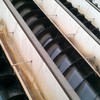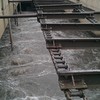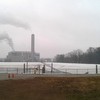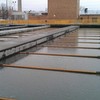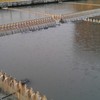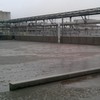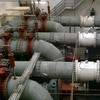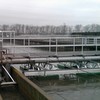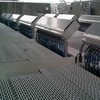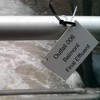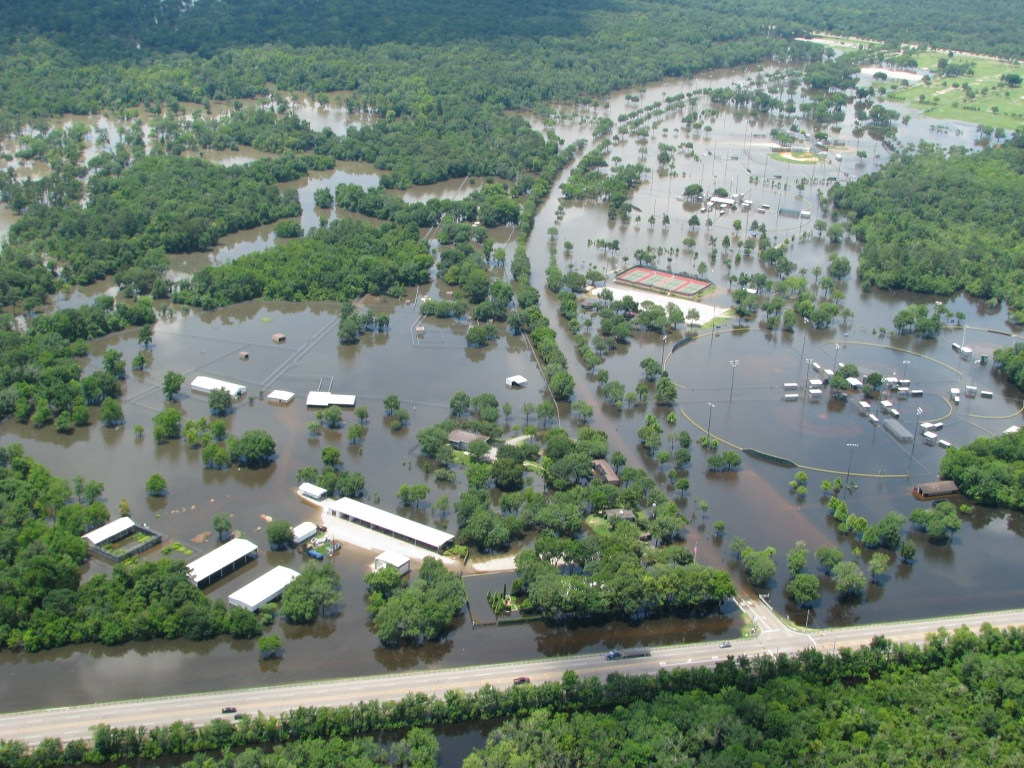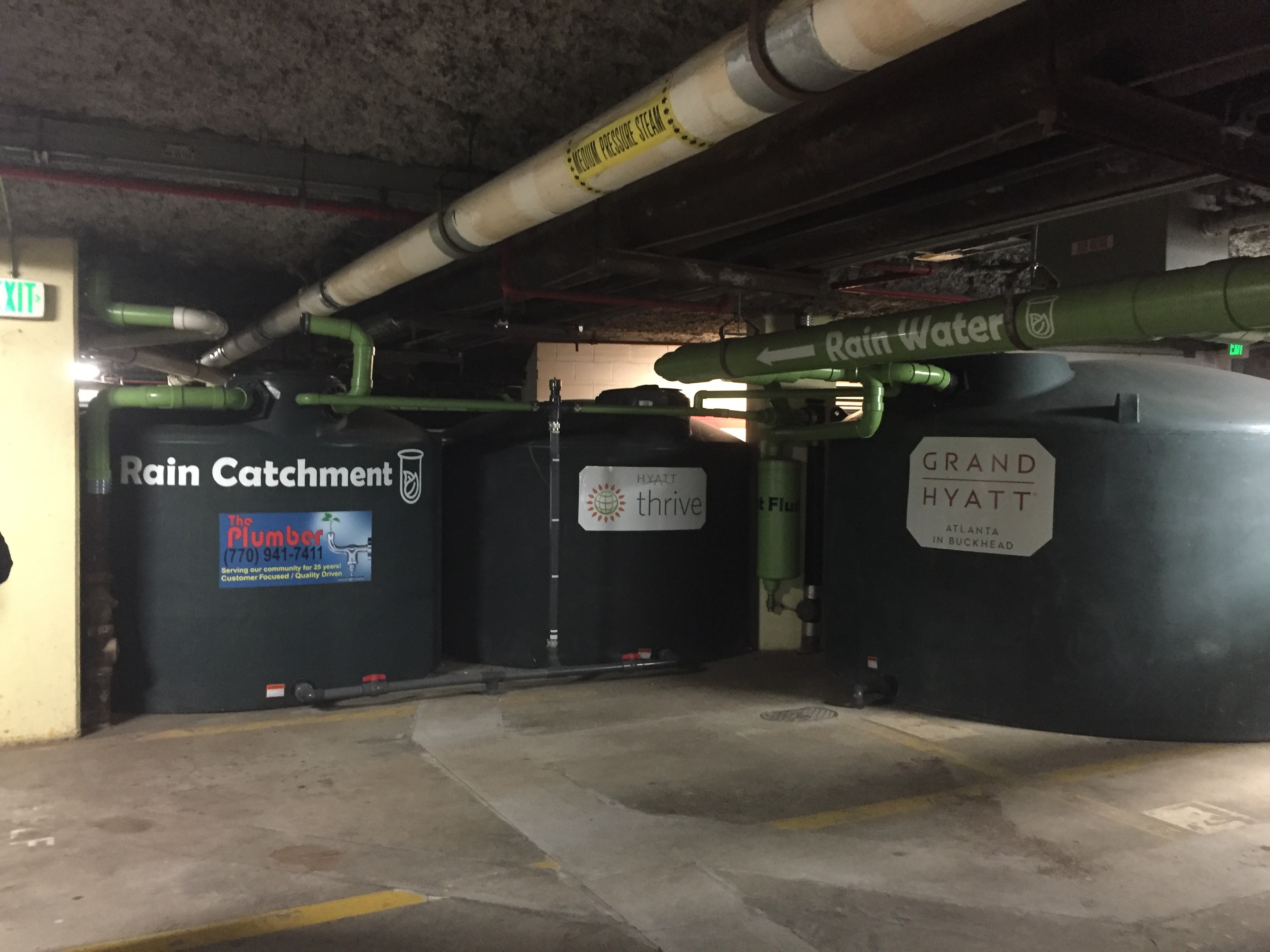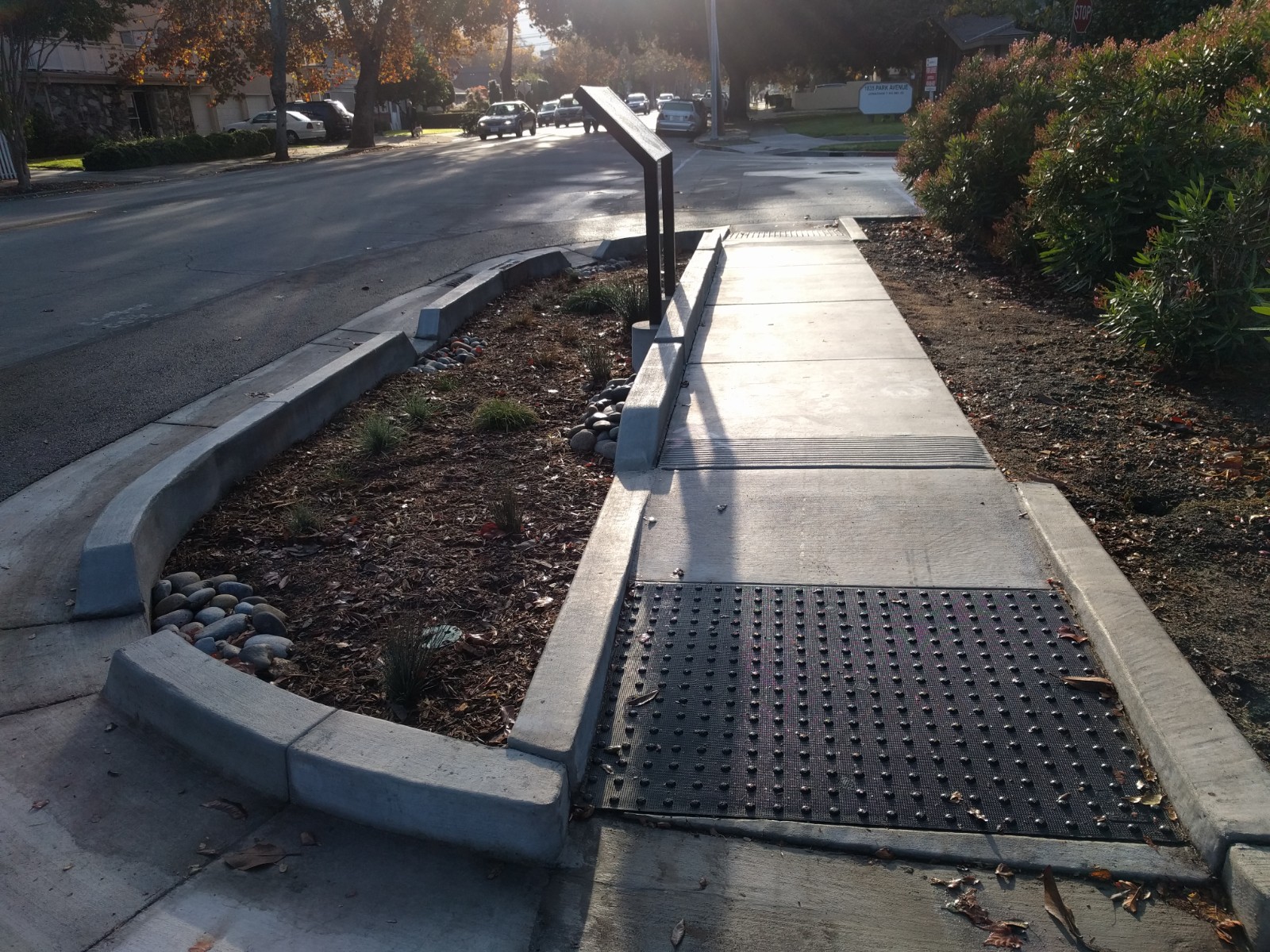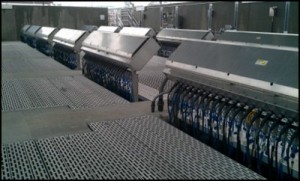
Ultraviolet disinfection at the Indianapolis Belmont Advanced Wastewater Treatment Plant
(keep reading to see a photo tour)
Water and wastewater disinfection destroys or inactivates pathogens, making water recreation and drinking water much safer. Yet, even in developed countries, it is not always safe to swim after a heavy rainfall.
The World Health Organization and the U.S. Centers for Disease Control and Prevention describe disinfection as one of the most significant public health advancements of the last century. Feb. 24 to 26 in Indianapolis, attendees of the Water Environment Federation Disinfection and Public Health 2013 conference discussed disinfection methods of today and ways to address such current issues as wet weather disinfection.
Rain events can cause combined sewer overflows (CSOs) when stormwater overwhelms conveyance systems or the treatment plant itself. In addition to polluted runoff, CSOs contain pollutants and pathogens from raw sewage, representing significant public health and environmental risks. Due to these risks, CSOs are the subject of billion dollar consent decrees in many older U.S. cities.
Wet weather disinfection challenges
Disinfecting wet weather flows is one way to neutralize the threat of pathogens, but there are several challenges to doing so.
First, due to the intermittent nature of rain, CSO flows are variable, occur irregularly, and vary widely in pollutant loads and the types of pathogens present. “Ten times a year, the disinfection system might fire up for a day,” said Curtis Courter, senior associate at Hazen and Sawyer and a presenter on wet weather issues at the Disinfection and Public Health 2013 conference. This variable nature makes dosing with chemical disinfectants difficult. Also, ultraviolet (UV) disinfection uses significant amounts of energy. Lamps would typically be turned on only during a CSO event but must warm up before disinfection can occur.
CSOs also have high suspended solids concentrations, which typically makes disinfection less effective. Ballasted flocculation can help settle out larger flocs and is necessary for using UV. However, flocculation requires the addition of a coagulant, such as iron salts, and makes the process more expensive. If suspended solids contain high levels of organic matter, chemical disinfectants can react with the organic matter to create disinfection byproducts, some of which are harmful to humans and aquatic life.
Furthermore, “there is significant concern over the toxicity of the chemicals and their impact to the environment,” Courter said. He said the most common CSO disinfectant is sodium hypochlorite, a derivative of chlorine. Other chemicals that have been considered include peracetic acid, calcium hypochlorite, bromochlorodimethylhydantoin (BCDMH), and ozone. “More pretreatment can reduce disinfection byproducts,” he said, and quenching agents can neutralize the disinfectant residuals. UV can also be utilized when pretreatment is provided.
Options for disinfecting wet weather flows
Some typical options for disinfecting CSOs include building a contact tank within the collection system or adding disinfectant directly into a long outfall pipe. Disinfection is typically preceded by a screening process to remove floatables and other large debris (see several examples from Detroit here and here). Both options can work, but the effectiveness of the disinfection process depends on contact time, strength of the disinfectant, and proper mixing.
Due to the variability of flow and wastewater characterization throughout and between wet weather events, it is recommended that site-specific sampling and testing be completed to confirm dose-response relationships.
Adding storage capacity within the collection system to house excess wet weather flows until they can be conveyed to the water resource recovery facility (WRRF) for full treatment and disinfection is another option as is expanding treatment capacity at the WRRF itself.
Expanding storage capacity in Indianapolis
Outside the fence
About 142 km2 (55 mi2) of downtown Indianapolis is served by combined sewers — some of which are more than 100 years old — and as little as 6.35 mm (0.25 in.) of rain can cause CSOs. Under a 20-year, $1.6 billion Long-Term Control Plan for CSOs, the City of Indianapolis plans to capture up to 97% of CSOs. The backbone of the plan is an underground storage tunnel system that will hold 946,250 m3 (250 million gal) of stormwater and sewage. The stored water will release slowly to the water resource recovery facility when capacity at the plant becomes available.
Part of this system is the $257 million Deep Rock Tunnel Connector, a 5.5-m-diameter (18-ft–diameter) tunnel that stretches over 10 km (6 mi) underground. Installed more than 76 m (250 ft) below ground, the tunnel will capture stormwater and sewage from three overflow points. The first four phases are projected to be complete in 2016, years ahead of the consent decree schedule. Read an open-access article about this project in the Feb. edition of WE&T.
Inside the fence
Like sewer systems, treatment plants are designed to handle a specific volume of flow and can be overwhelmed by stormwater traveling to the plant via combined sewers. When the plant’s capacity is exceeded, a portion of the water typically bypasses secondary treatment— the biological part of the treatment process in which beneficial bacteria reduce nutrients and organic matter. In Indianapolis, the bypass water is disinfected within National Pollutant Discharge Elimination System limits and discharged ahead of the fully treated water.
The Indianapolis Belmont Advanced Wastewater Treatment Plant serves more than 449,000 homes and businesses and receives flow from the city’s combined sewer area. As part of its consent decree, Indianapolis also recently doubled Belmont’s secondary treatment capacity from 567,812 to 1.14 million m3/d (150 to 300 million gal/d). The secondary expansion will improve water quality in the White River by reducing CSO and bypass discharges by more than 3.8 million m3/yr (1 billion gal/yr).
A new air nitrification system with two 64,352 m3 (17–million-gal) aeration tanks and improvements to the old nitrification system expanded the plant’s secondary treatment capacity. Additions and improvements to existing lift stations also help transport water during wet weather. The plant will fire up its new UV system in March, which will work in tandem with a chlorination basin during wet weather.
The Southport Advanced Wastewater Treatment Plant, also in Indianapolis, will expand from 567,812 to 946,353 m3/d (150 to 250 million gal/d). “There will be over 550 million gallons per day [1.9 million m3/d] peak capacity between the two plants,” said Jeff Hansen, with operations management at Citizens Water. “Operators have the ability to push sewer flow from downtown Indianapolis to Southport.” This feature will enable Belmont to receive more wet weather flow without exceeding capacity.
At both plants, flow equalization basins store wet weather flows until capacity is available to treat and disinfect the water. Belmont’s two equalization basins, built in August of 2005, contain about 132,489 m3 (35 million gal) of storage. “The equalization basins decrease the load on the system and are the first line of defense,” Hansen said. “They offer an in-between solution to the deep tunnel.”
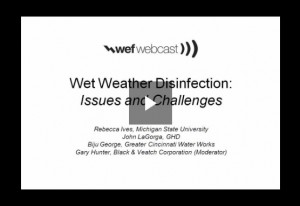 Learn more about wet weather disinfection in this recording of Wet Weather Disinfection: Issues and Challenges, a webcast developed by the Water Environment Federation Disinfection and Public Health Committee.
Learn more about wet weather disinfection in this recording of Wet Weather Disinfection: Issues and Challenges, a webcast developed by the Water Environment Federation Disinfection and Public Health Committee.
Sorry, there are no polls available at the moment.


